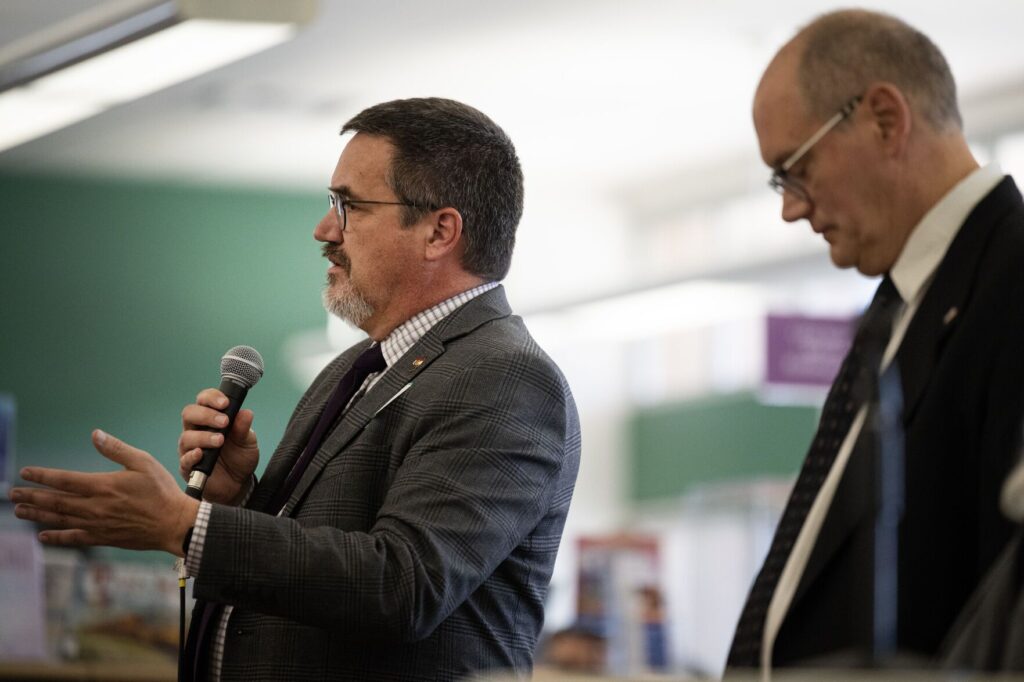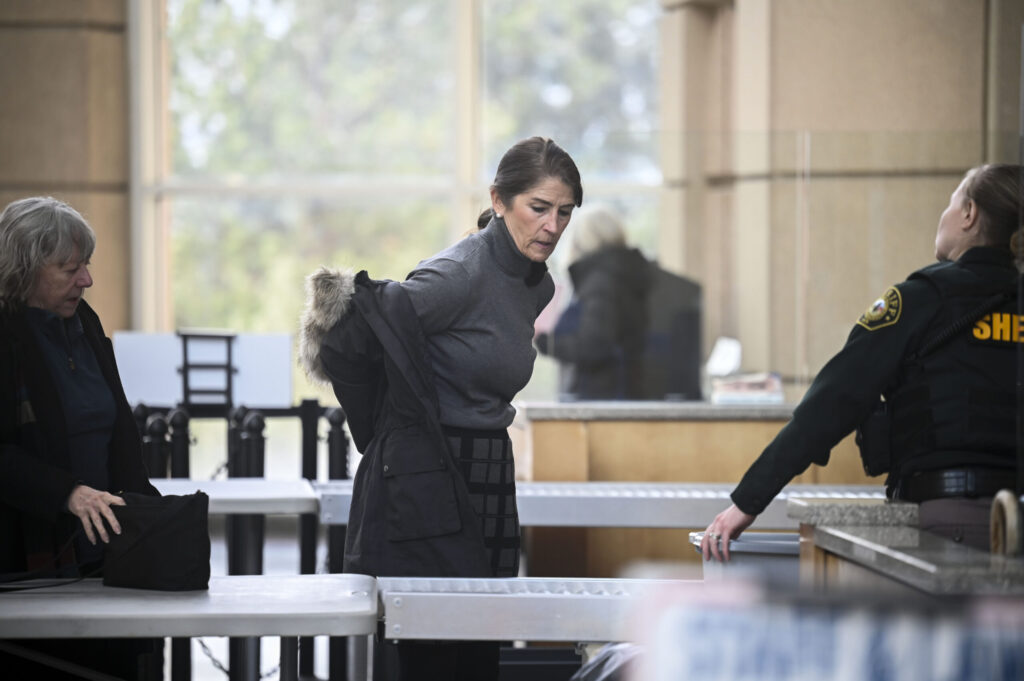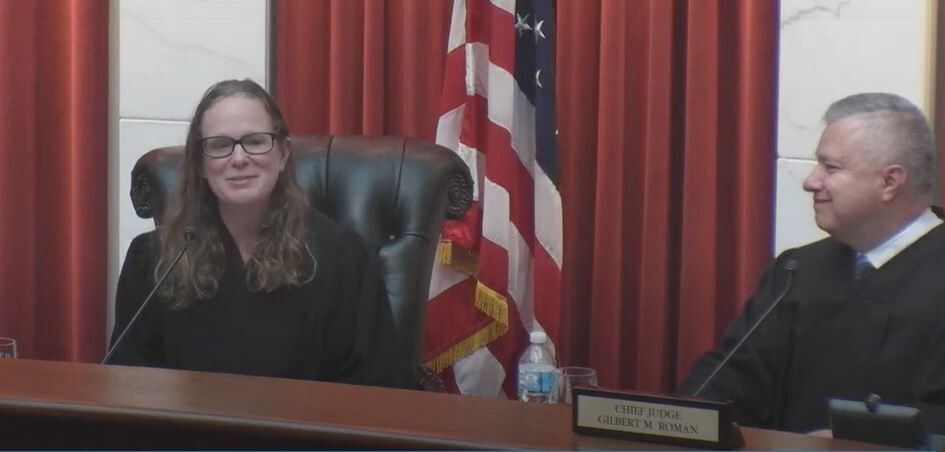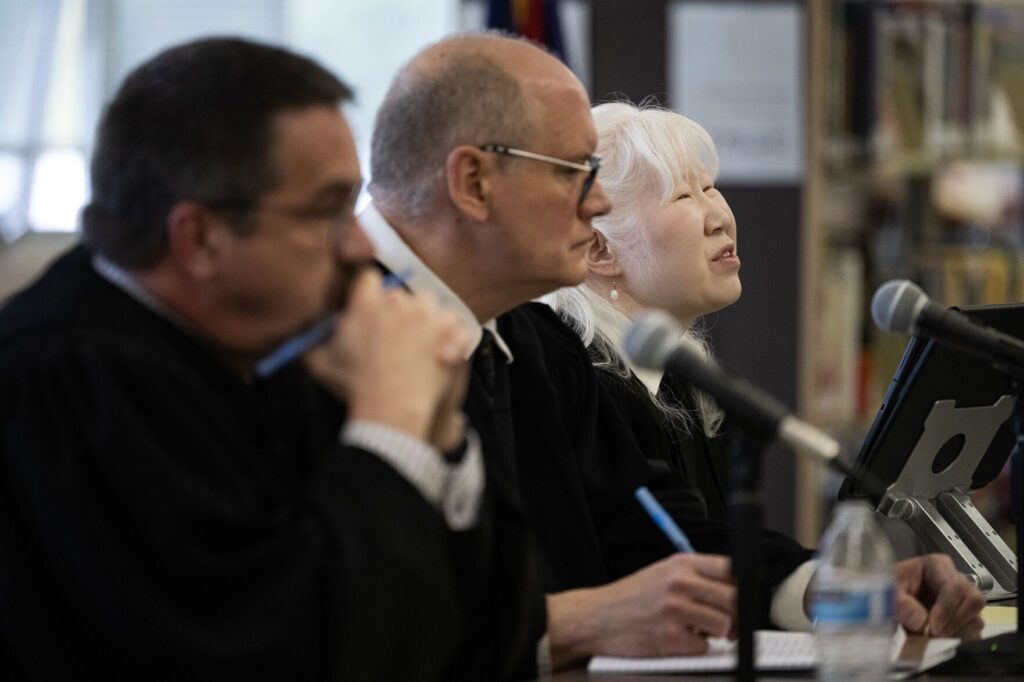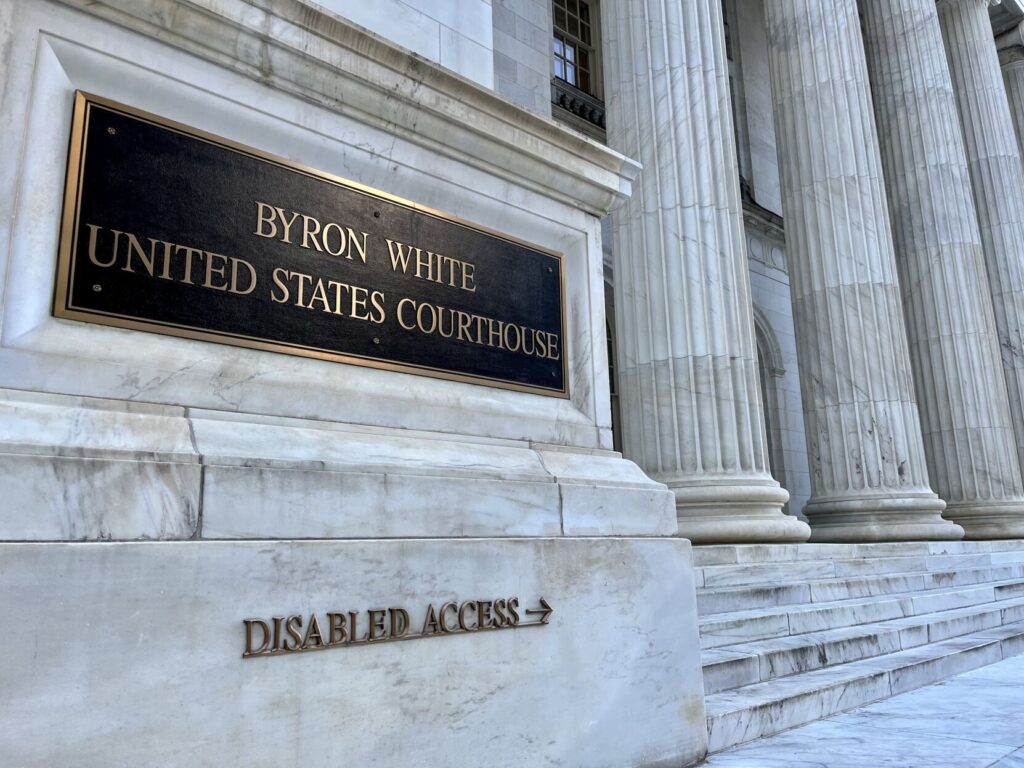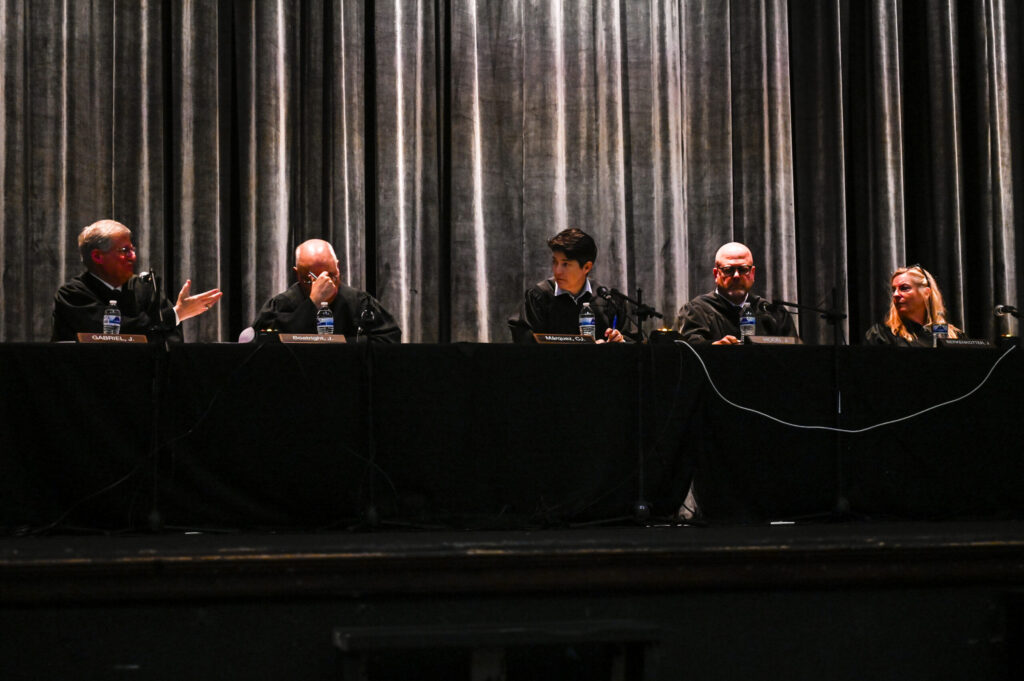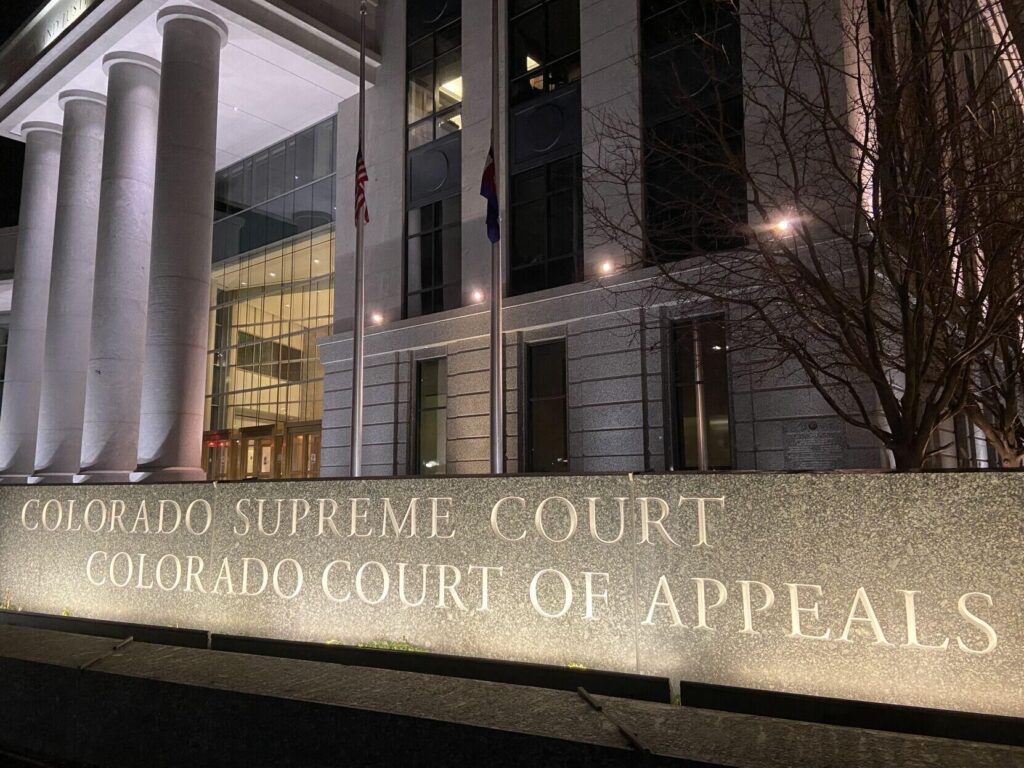El Paso’s voting machines pass accuracy test, contradicting Tina Peters’ claim of high error rate
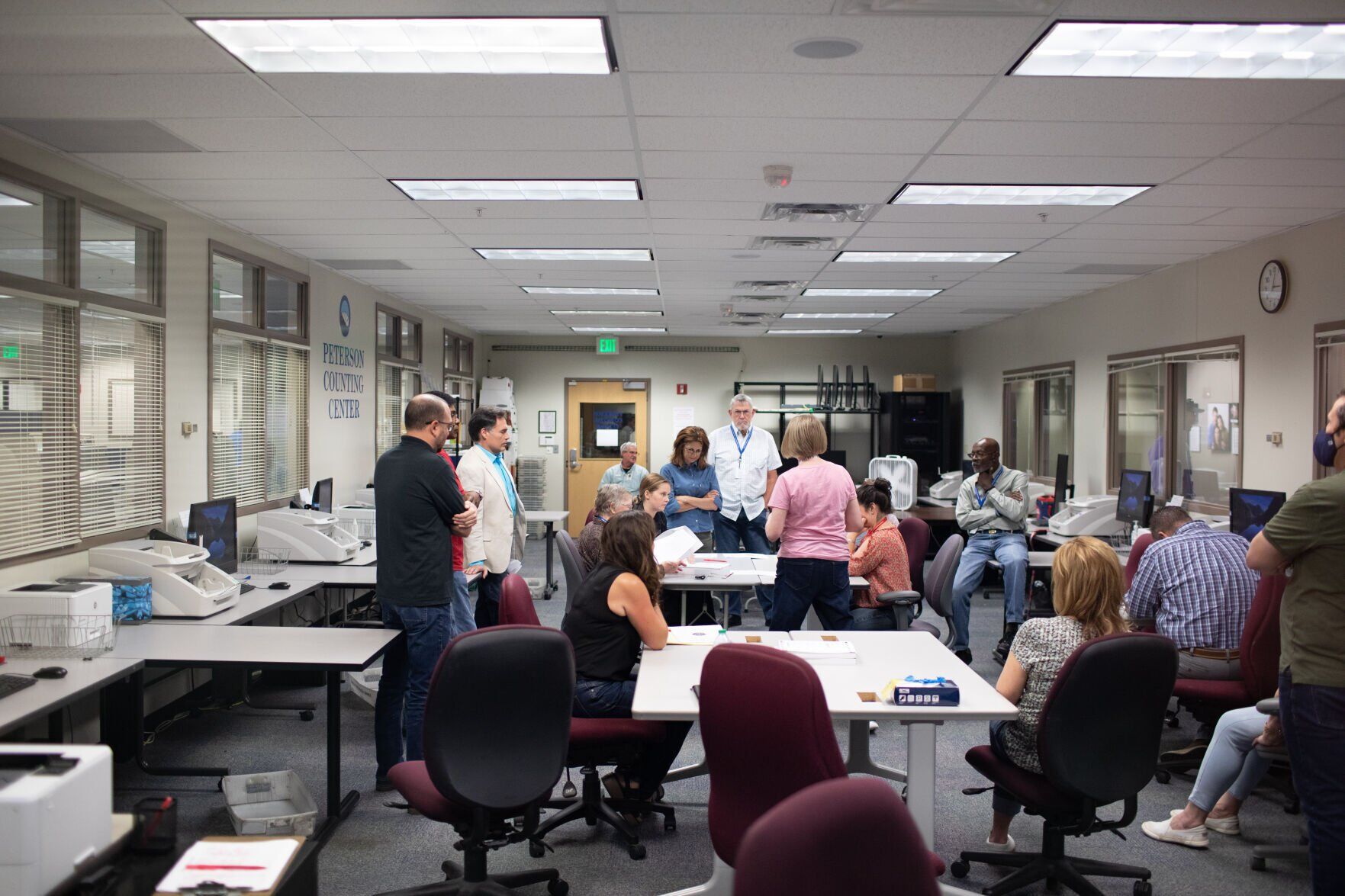
El Paso County election officials began tabulating tens of thousands of ballots over the weekend after the voting machines passed an accuracy test, contradicting claims of a high error rate by Mesa County clerk Tina Peters, who, along with three other candidates, requested a recount after losing her primary race for Secretary of State.
The county said it tested all of its ballot counting equipment before the recount, and the machines passed with “100% accuracy.”
The county tabulated about 27,000 votes on Sunday.
In a news release sent Friday, Peters claimed that the machines at the El Paso County Clerk’s Office failed the logic and accuracy test “in a spectacular fashion with over a 50% error rate out of the 4,000+ ballots tested.”
El Paso County Clerk Chuck Broerman called that statement “totally inaccurate.”
“It’s very unfortunate that people are using this for political gain,” he said.
Things got tense at times Saturday at the El Paso County Clerk and Recorder’s Office as county election officials began conducting electronic recounts for four races from the June 28 primaries.
All four candidates requesting recounts lost by double-digit margins, according to June 28 results. Peters, who garnered only 28% of the vote, lost to former Jefferson County Clerk Pam Anderson, who secured 43%. In the GOP primary for El Paso County clerk, Peter Lupia lost with 35% of the vote to Steve Schleiker’s 64%. In the coroner’s GOP primary race, Dr. Rae Ann Weber lost with 34% of the vote to incumbent Dr. Leon Kelley’s 65%. And, in the state Senate District 9 GOP primary, Lynda Zamora Wilson lost with 33% of the vote to Paul Lundeen’s 66%.
El Paso County to conduct GOP primary recounts in clerk, coroner races
Peters, Lupia, Weber and Wilson each paid for the recounts, since the margins of defeat were greater than the margin for state-mandated automatic recounts, which would have been taxpayer-funded.
Under state law, the recounts must be completed by the close of business on Thursday.
In a room closed to the public but viewable through multiple windows, election officials, bipartisan election judges, canvass board members, and candidates or their appointed watchers took part in the proceedings.
Before the recounts could begin, the Clerk’s Office conducted a logic and accuracy test that began Friday and was completed about 1:30 p.m. Saturday. The test gave voting machines from the primaries a batch of 4,200 test ballots of which officials know the outcome.
The Clerk’s Office released a statement confirming on Saturday evening that the logic and accuracy test was, in fact, successful, passing with 100% accuracy.
The point of the test, according to Broerman, is to ensure the machine tabulates the votes correctly, putting the ballots into the correct bins etc. The test batch also simulated improperly marked ballots, such as when someone fills in only half the bubble or doesn’t vote for that particular race at all. Such ballots got kicked out for a bipartisan group of local election judges to review. These improperly marked ballots were only reviewed in recounts.
Janna Blanter, a GOP volunteer who previously has served as an election judge, said one common ballot issue she has seen is that someone will circle a box for one candidate, cross it out with an “X,” and choose the other one. There also are cases in which a voter simply fills in a box too faintly.
“One of the things I’ve seen adjudicated was … nothing is checked off, but [there is] this long missive about protests and all that stuff,” Blanter said.
The voting machines – used in El Paso County since 2017 and around Colorado since 2016 – came under scrutiny mostly notably in the aftermath of the 2020 presidential election, with supporters of former President Donald Trump’s claims of a stolen election leading the criticism.
Broerman said he understands where the fear and skepticism come from.
Tina Peters, Zamora Wilson submit funds for recounts of June 28 primary
“I understand the passion by which this comes from. This stems from the 2020 election. President Trump won by a little over 11 points here in El Paso County, but people have concerns about what they see in other states, and then they overlay their concerns and fears on the local area,” he said.
Recount would cost Tina Peters, Ron Hanks roughly $256,000 each
Responding to claims of inaccuracy, Broerman said Peters was calling the machines sending improperly marked ballots out to bipartisan human eyes for adjudication an error. In fact, he said, the machines were operating in compliance with state law.
Among other procedures, the Clerk’s Office release said that the four candidates or their representatives were allowed to hand-mark 10 random ballots and compare their hand counts to tabulated results.
Weber, one of the candidates, maintained she still had concerns, calling the process “revealing” but not “reassuring.”
“We are given what we are shown here and take that to be, ‘You can accept this or you don’t have any other recourse.’ We don’t get to look inside the machines. We don’t get to edit programming, we don’t get to look at the code,” she said.
Tina Peters announces raising $230,000 to pay for recount







